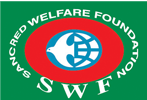ECONOMIC JUSTICE AND RESILIENCE INITIATIVES (EJRI) PROJECT
Project Period: 1stOctober 2016 to 30th June 2017.
The goal of the IDEAL project: “Enhance sustainable livelihoods for quality life and social justice of at risk poor people”.
Project Objectives
- 1800 targeted households have increased access to food and income security and enjoyed quality life by June 2015.
- Develop women leadership to improve gender equality.
- Improve community capacities to manage disaster risk, conserve environment and adapt with climatic impact.
- Develop and empower community institutions to communicate and claim their rights and entitlements.
Project Strategies
Adopting Sustainable Livelihood framework to change livelihood condition of vulnerable community people thorough Right Based Approach.
Location and Beneficiary of the project
| District | Upazilla | Union | Target Villages | Targeted household | Direct beneficiary | Indirect beneficiary |
Habigonj |
Baniachong |
1.Baniachang Uttar Paschim |
12 |
600 |
3420 |
24546 |
2.Baniachang Dakhin-Paschim |
14 |
600 |
3360 |
24464 |
||
Sub total |
26 |
1200 |
6780 |
49010 |
||
Ajmeriganj |
3. Shibpasha |
8 |
550 |
2750 |
24479 |
|
4. Jalshuka |
8 |
250 |
1350 |
16181 |
||
Sub total |
16 |
800 |
4100 |
40660 |
||
Total |
2 |
4 |
42 |
2000 ( F:1767) |
10880 |
89670 |
2000 households belong to the marginal and vulnerable section of community people. The categories households are in Baniachong Upazilla; 1200 households and Ajmerigonj Upazilla; 800 households. The 42 villages were finalized among 84 villages after FGD meeting & base line survey of households.
Final Beneficiary: Household members and targeted community people of project areas estimated direct beneficiaries 10880 and indirect beneficiaries 89670.
Occupation wise categorized beneficiaries are listed below:
- Small Farmer
- Fisherman
- Livestock rearing
- Daily labor and irregular earner
- Sewer, Boatman, Boot polisher
- Small-scale business group
- TBA
- Artisan
- Disable headed households and poor households that have disable person are depending.
- Household of women headed and households depend on charity/beggar. Note that after baseline survey, beneficiaries have categorized.
Budget of the Project:
Grant from Oxfam BDT. (1stOctober 2016 to 30thJune 2017) : BDT 1,400,000.00
Total Budget : BDT 1,400,000.00
Result: Since the EJRI project was a part of the IDEAL Project and its goal and objectives were the same, here are some of the changes that had been made to improved the lives of women and children in the social life through the EJRI project they are following below –
- Women are participated outside programs through day observation and rally, networking with GoB agencies, participating in training, representing UP standing committee, visiting to other NGOs, CSOs for gathering and sharing knowledge.
- Women are involving in agriculture activities for increasing production & income.
- Women are getting the membership in different development committee of LGI and they are participating in decision making and towards for empowering in the society.
- Reducing the family and community conflicts due to active participation in group, inclusion in UP standing committee, taking part of leadership in UP, and increasing the family income through receiving skill development trainings and taking alternative income generation activities.
- Increasing the rate of School going children as due impact of increasing social awareness through participation of women in different social activities. Increasing school going children is one of the indicators for national growth rate.
- Mobility of Rural Women is increasing, women can access to different financial institutions, local market, government and non-government office, and taking part of leadership in the group, society and LGI through this cooperative society.
- Women are more active in mitigation of family conflict, stopping early marriage, domestic violence, and reunification of family life among husband and wife.
- Positive Trend of plantation in homestead based increasing among the community women are now feel intense interest, as they have oriented on environment and economic benefits of plantation.
- Trends on sanitation and hygiene maintaining is increasing, hand washing, use of sanitary latrine, personal hygiene, and food sanitation etc.
- Involvement of women in vegetable cultivation is increased; most of group members are using their homesteads spaces for vegetable cultivation and getting nutritional benefits through family consumption and also can sale a good amount.
